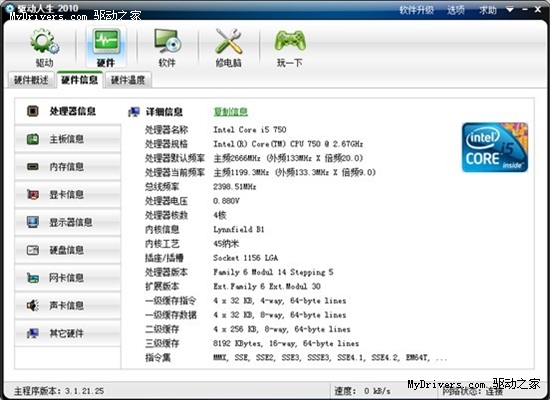一、上傳原理與配置
1.1 原理
將客戶端文件上傳到服務(wù)器端,再將服務(wù)器端的文件(臨時(shí)文件)移動(dòng)到指定目錄即可。
1.2 客戶端配置
所需:表單頁(yè)面(選擇上傳文件);
具體而言:發(fā)送方式為POST,添加enctype="multipart/form-data"屬性,兩者缺一不可(但是,優(yōu)缺點(diǎn)并存,這里也限定了上傳的方式和上傳的文件之后的調(diào)用等方面,后面會(huì)說(shuō)到)
<!DOCTYPE html PUBLIC "-//W3C//DTD HTML 4.01 Transitional//EN" "http://www.w3.org/TR/html4/loose.dtd"><html><head><meta http-equiv="Content-Type" content="text/html; charset=UTF-8"><title>Insert title here</title></head><body><form action="doAction.php" method="post" enctype="multipart/form-data">請(qǐng)選擇您要上傳的文件:<input type="file" name="myFile" /><br/><input type="submit" value="上傳"/></form><?php?></body></html>
先是表單頁(yè)面(請(qǐng)自動(dòng)忽略前端問(wèn)題。。。),關(guān)鍵就是form的屬性;另外就是input 中用到了type="file"這一點(diǎn)(體現(xiàn)到php的強(qiáng)大的拓展等等)。
然后是doAction
<?php//$_FILES:文件上傳變量//print_r($_FILES);$filename=$_FILES['myFile']['name'];$type=$_FILES['myFile']['type'];$tmp_name=$_FILES['myFile']['tmp_name'];$size=$_FILES['myFile']['size'];$error=$_FILES['myFile']['error'];//將服務(wù)器上的臨時(shí)文件移動(dòng)到指定位置//方法一move_upload_file($tmp_name,$destination)//move_uploaded_file($tmp_name, "uploads/".$filename);//文件夾應(yīng)提前建立好,不然報(bào)錯(cuò)//方法二copy($src,$des)//以上兩個(gè)函數(shù)都是成功返回真,否則返回false//copy($tmp_name, "copies/".$filename);//注意,不能兩個(gè)方法都對(duì)臨時(shí)文件進(jìn)行操作,臨時(shí)文件似乎操作完就沒(méi)了,我們?cè)囋嚪催^(guò)來(lái)copy($tmp_name, "copies/".$filename);move_uploaded_file($tmp_name, "uploads/".$filename);//能夠?qū)崿F(xiàn),說(shuō)明move那個(gè)函數(shù)基本上相當(dāng)于剪切;copy就是copy,臨時(shí)文件還在//另外,錯(cuò)誤信息也是不一樣的,遇到錯(cuò)誤可以查看或者直接報(bào)告給用戶if ($error==0) { echo "上傳成功!";}else{ switch ($error){ case 1: echo "超過(guò)了上傳文件的最大值,請(qǐng)上傳2M以下文件"; break; case 2: echo "上傳文件過(guò)多,請(qǐng)一次上傳20個(gè)及以下文件!"; break; case 3: echo "文件并未完全上傳,請(qǐng)?jiān)俅螄L試!"; break; case 4: echo "未選擇上傳文件!"; break; case 5: echo "上傳文件為0"; break; }} 先把print_r($_FILES)這個(gè)信息看一下
Array( [myFile] => Array ( [name] => 梁博_簡(jiǎn)歷.doc [type] => application/msword [tmp_name] => D:/wamp/tmp/php1D78.tmp [error] => 0 [size] => 75776 ))
所以得到的是個(gè)二維數(shù)組,該怎么用,都是基本的東西(其實(shí)我喜歡降維再用);
基本是一眼就懂的東西,不羅嗦,關(guān)鍵有兩個(gè):tmp_name臨時(shí)文件名;error報(bào)錯(cuò)信息(代號(hào),后面可以利用);
然后這里看一下doAction后面一部分,利用報(bào)錯(cuò)信息來(lái)反饋給用戶,需要說(shuō)明的是為什么報(bào)錯(cuò),和報(bào)錯(cuò)信息是什么都;
1.3 關(guān)于報(bào)錯(cuò)
--報(bào)錯(cuò)原因
基本上都是超過(guò)或者不符合服務(wù)器關(guān)于上傳文件的配置,那么服務(wù)器端配置有哪些呢?
先考慮上傳我們用了什么?POST,upload
所以在php.ini中找這么幾項(xiàng):
file_upload:Onupload_tmp_dir=——臨時(shí)文件保存目錄;upload_max_filesize=2Mmax_file_uploads=20——允許一次上傳的最大文件數(shù)量(注意和上面那個(gè)的區(qū)別,有沒(méi)有size,別亂想)post_max_size=8M——post方式發(fā)送數(shù)據(jù)的最大值
其他相關(guān)配置
max_exectuion_time=-1——最大執(zhí)行時(shí)間,避免程序不好占用服務(wù)器資源;
max_input_time=60
max_input_nesting_level=64——輸入嵌套深度;
memory_limit=128M——最大單線程的獨(dú)立內(nèi)存使用量
總之都是有關(guān)資源的配置。
--錯(cuò)誤號(hào)
以下(偷懶)引自http://blog.sina.com.cn/s/blog_3cdfaea201008utf.html
UPLOAD_ERR_OK 值:0; 沒(méi)有錯(cuò)誤發(fā)生,文件上傳成功。
UPLOAD_ERR_INI_SIZE 值:1; 上傳的文件超過(guò)了 php.ini 中 upload_max_filesize 選項(xiàng)限制的值。
UPLOAD_ERR_FORM_SIZE 值:2; 上傳文件的大小超過(guò)了 HTML 表單中 MAX_FILE_SIZE 選項(xiàng)指定的值。
UPLOAD_ERR_PARTIAL 值:3; 文件只有部分被上傳。
UPLOAD_ERR_NO_FILE 值:4; 沒(méi)有文件被上傳。
注意:這個(gè)錯(cuò)誤信息是第一步上傳的信息,也就是上傳到臨時(shí)文件夾的情況,而不是move或者copy的情況。
二、上傳相關(guān)限制
2.1 客戶端限制
<form action="doAction2.php" method="post" enctype="multipart/form-data"><input type="hidden" name="MAX_FILE_SIZE" value="101321" />請(qǐng)選擇您要上傳的文件:<input type="file" name="myFile" accept="image/jpeg,image/gif,text/html"/><br/><input type="submit" value="上傳"/></form>
這里用input的屬性對(duì)上傳文件的大小和類型進(jìn)行了限制,但是個(gè)人感覺(jué):一,html代碼是“可見(jiàn)的”;二,常不起作用(沒(méi)找到原因,但因?yàn)榈谝粋€(gè)我也想放棄它,知道就好。
2.2 服務(wù)器端限制
主要限制大小和類型,再有就是方式。
<?phpheader('content-type:text/html;charset=utf-8');//接受文件,臨時(shí)文件信息$fileinfo=$_FILES["myFile"];//降維操作$filename=$fileinfo["name"];$tmp_name=$fileinfo["tmp_name"];$size=$fileinfo["size"];$error=$fileinfo["error"];$type=$fileinfo["type"];//服務(wù)器端設(shè)定限制$maxsize=10485760;//10M,10*1024*1024$allowExt=array('jpeg','jpg','png','tif');//允許上傳的文件類型(拓展名$ext=pathinfo($filename,PATHINFO_EXTENSION);//提取上傳文件的拓展名//目的信息$path="uploads";if (!file_exists($path)) { //當(dāng)目錄不存在,就創(chuàng)建目錄 mkdir($path,0777,true); chmod($path, 0777);}//$destination=$path."/".$filename;//得到唯一的文件名!防止因?yàn)槲募嗤a(chǎn)生覆蓋$uniName=md5(uniqid(microtime(true),true)).$ext;//md5加密,uniqid產(chǎn)生唯一id,microtime做前綴if ($error==0) { if ($size>$maxsize) { exit("上傳文件過(guò)大!"); } if (!in_array($ext, $allowExt)) { exit("非法文件類型"); } if (!is_uploaded_file($tmp_name)) { exit("上傳方式有誤,請(qǐng)使用post方式"); } if (@move_uploaded_file($tmp_name, $uniName)) {//@錯(cuò)誤抑制符,不讓用戶看到警告 echo "文件".$filename."上傳成功!"; }else{ echo "文件".$filename."上傳失敗!"; } //判斷是否為真實(shí)圖片(防止偽裝成圖片的病毒一類的 if (!getimagesize($tmp_name)) {//getimagesize真實(shí)返回?cái)?shù)組,否則返回false exit("不是真正的圖片類型"); }}else{ switch ($error){ case 1: echo "超過(guò)了上傳文件的最大值,請(qǐng)上傳2M以下文件"; break; case 2: echo "上傳文件過(guò)多,請(qǐng)一次上傳20個(gè)及以下文件!"; break; case 3: echo "文件并未完全上傳,請(qǐng)?jiān)俅螄L試!"; break; case 4: echo "未選擇上傳文件!"; break; case 7: echo "沒(méi)有臨時(shí)文件夾"; break; }} 這里,具體實(shí)現(xiàn)都有注釋,每一步其實(shí)都可以自己試試的,很有趣。
2.3 封裝
函數(shù)
<?phpfunction uploadFile($fileInfo,$path,$allowExt,$maxSize){$filename=$fileInfo["name"];$tmp_name=$fileInfo["tmp_name"];$size=$fileInfo["size"];$error=$fileInfo["error"];$type=$fileInfo["type"];//服務(wù)器端設(shè)定限制$ext=pathinfo($filename,PATHINFO_EXTENSION);//目的信息if (!file_exists($path)) { mkdir($path,0777,true); chmod($path, 0777);}$uniName=md5(uniqid(microtime(true),true)).'.'.$ext;$destination=$path."/".$uniName;if ($error==0) { if ($size>$maxSize) { exit("上傳文件過(guò)大!"); } if (!in_array($ext, $allowExt)) { exit("非法文件類型"); } if (!is_uploaded_file($tmp_name)) { exit("上傳方式有誤,請(qǐng)使用post方式"); } //判斷是否為真實(shí)圖片(防止偽裝成圖片的病毒一類的 if (!getimagesize($tmp_name)) {//getimagesize真實(shí)返回?cái)?shù)組,否則返回false exit("不是真正的圖片類型"); } if (@move_uploaded_file($tmp_name, $destination)) {//@錯(cuò)誤抑制符,不讓用戶看到警告 echo "文件".$filename."上傳成功!"; }else{ echo "文件".$filename."上傳失敗!"; }}else{ switch ($error){ case 1: echo "超過(guò)了上傳文件的最大值,請(qǐng)上傳2M以下文件"; break; case 2: echo "上傳文件過(guò)多,請(qǐng)一次上傳20個(gè)及以下文件!"; break; case 3: echo "文件并未完全上傳,請(qǐng)?jiān)俅螄L試!"; break; case 4: echo "未選擇上傳文件!"; break; case 7: echo "沒(méi)有臨時(shí)文件夾"; break; }}return $destination;} 調(diào)用
<?phpheader('content-type:text/html;charset=utf-8');$fileInfo=$_FILES["myFile"];$maxSize=10485760;//10M,10*1024*1024$allowExt=array('jpeg','jpg','png','tif');$path="uploads";include_once 'upFunc.php';uploadFile($fileInfo, $path, $allowExt, $maxSize); 三、多文件的上傳實(shí)現(xiàn)
3.1 利用單文件封裝
<!DOCTYPE html PUBLIC "-//W3C//DTD HTML 4.01 Transitional//EN" "http://www.w3.org/TR/html4/loose.dtd"><html><head><meta http-equiv="Content-Type" content="text/html; charset=UTF-8"><title>Insert title here</title></head><body><form action="doAction5.php" method="post" enctype="multipart/form-data">請(qǐng)選擇您要上傳的文件:<input type="file" name="myFile1" /><br/>請(qǐng)選擇您要上傳的文件:<input type="file" name="myFile2" /><br/>請(qǐng)選擇您要上傳的文件:<input type="file" name="myFile3" /><br/>請(qǐng)選擇您要上傳的文件:<input type="file" name="myFile4" /><br/><input type="submit" value="上傳"/></form></body></html>
<?php//print_r($_FILES);header('content-type:text/html;charset=utf-8');include_once 'upFunc.php';foreach ($_FILES as $fileInfo){ $file[]=uploadFile($fileInfo);} 這里的思路,從print_r($_FILES)中去找,打印出來(lái)看到是個(gè)二維數(shù)組,很簡(jiǎn)單,遍歷去用就好了!
上面那個(gè)function的定義改一下,給定一些默認(rèn)值
function uploadFile($fileInfo,$path="uploads",$allowExt=array('jpeg','jpg','png','tif'),$maxSize=10485760){
這樣子,簡(jiǎn)單是簡(jiǎn)單,但遇到一些問(wèn)題。
正常的上傳4個(gè)圖片是沒(méi)問(wèn)題,但要是中間激活了函數(shù)中的exit,就會(huì)立即停止,導(dǎo)致其他圖片也無(wú)法上傳。
3.2 升級(jí)版封裝
旨在實(shí)現(xiàn)針對(duì)多個(gè)或單個(gè)文件上傳的封裝
首先這樣子寫個(gè)靜態(tài)文件
<!DOCTYPE html PUBLIC "-//W3C//DTD HTML 4.01 Transitional//EN" "http://www.w3.org/TR/html4/loose.dtd"><html><head><meta http-equiv="Content-Type" content="text/html; charset=UTF-8"><title>Insert title here</title></head><body><form action="doAction5.php" method="post" enctype="multipart/form-data">請(qǐng)選擇您要上傳的文件:<input type="file" name="myFile[]" /><br/>請(qǐng)選擇您要上傳的文件:<input type="file" name="myFile[]" /><br/>請(qǐng)選擇您要上傳的文件:<input type="file" name="myFile[]" /><br/>請(qǐng)選擇您要上傳的文件:<input type="file" name="myFile[]" /><br/><input type="submit" value="上傳"/></form></body></html>
打印一下$_FILES
Array( [myFile] => Array ( [name] => Array ( [0] => test32.png [1] => test32.png [2] => 333.png [3] => test41.png ) [type] => Array ( [0] => image/png [1] => image/png [2] => image/png [3] => image/png ) [tmp_name] => Array ( [0] => D:/wamp/tmp/php831C.tmp [1] => D:/wamp/tmp/php834C.tmp [2] => D:/wamp/tmp/php837C.tmp [3] => D:/wamp/tmp/php83BB.tmp ) [error] => Array ( [0] => 0 [1] => 0 [2] => 0 [3] => 0 ) [size] => Array ( [0] => 46174 [1] => 46174 [2] => 34196 [3] => 38514 ) ))
可以得到一個(gè)三維數(shù)組。
復(fù)雜是復(fù)雜了,但復(fù)雜的有規(guī)律,各項(xiàng)數(shù)值都在一起了,很方便我們?nèi)≈担。?/p>
所以先得到文件信息,變成單文件處理那種信息
function getFiles(){ $i=0; foreach($_FILES as $file){ if(is_string($file['name'])){ //單文件判定 $files[$i]=$file; $i++; }elseif(is_array($file['name'])){ foreach($file['name'] as $key=>$val){ //我的天,這個(gè)$key用的diao $files[$i]['name']=$file['name'][$key]; $files[$i]['type']=$file['type'][$key]; $files[$i]['tmp_name']=$file['tmp_name'][$key]; $files[$i]['error']=$file['error'][$key]; $files[$i]['size']=$file['size'][$key]; $i++; } } } return $files; } 然后之前的那種exit錯(cuò)誤,就把exit改一下就好了,這里用res
function uploadFile($fileInfo,$path='./uploads',$flag=true,$maxSize=1048576,$allowExt=array('jpeg','jpg','png','gif')){ //$flag=true; //$allowExt=array('jpeg','jpg','gif','png'); //$maxSize=1048576;//1M //判斷錯(cuò)誤號(hào) $res=array(); if($fileInfo['error']===UPLOAD_ERR_OK){ //檢測(cè)上傳得到小 if($fileInfo['size']>$maxSize){ $res['mes']=$fileInfo['name'].'上傳文件過(guò)大'; } $ext=getExt($fileInfo['name']); //檢測(cè)上傳文件的文件類型 if(!in_array($ext,$allowExt)){ $res['mes']=$fileInfo['name'].'非法文件類型'; } //檢測(cè)是否是真實(shí)的圖片類型 if($flag){ if(!getimagesize($fileInfo['tmp_name'])){ $res['mes']=$fileInfo['name'].'不是真實(shí)圖片類型'; } } //檢測(cè)文件是否是通過(guò)HTTP POST上傳上來(lái)的 if(!is_uploaded_file($fileInfo['tmp_name'])){ $res['mes']=$fileInfo['name'].'文件不是通過(guò)HTTP POST方式上傳上來(lái)的'; } if($res) return $res; //$path='./uploads'; if(!file_exists($path)){ mkdir($path,0777,true); chmod($path,0777); } $uniName=getUniName(); $destination=$path.'/'.$uniName.'.'.$ext; if(!move_uploaded_file($fileInfo['tmp_name'],$destination)){ $res['mes']=$fileInfo['name'].'文件移動(dòng)失敗'; } $res['mes']=$fileInfo['name'].'上傳成功'; $res['dest']=$destination; return $res; }else{ //匹配錯(cuò)誤信息 switch ($fileInfo ['error']) { case 1 : $res['mes'] = '上傳文件超過(guò)了PHP配置文件中upload_max_filesize選項(xiàng)的值'; break; case 2 : $res['mes'] = '超過(guò)了表單MAX_FILE_SIZE限制的大小'; break; case 3 : $res['mes'] = '文件部分被上傳'; break; case 4 : $res['mes'] = '沒(méi)有選擇上傳文件'; break; case 6 : $res['mes'] = '沒(méi)有找到臨時(shí)目錄'; break; case 7 : case 8 : $res['mes'] = '系統(tǒng)錯(cuò)誤'; break; } return $res; }}
里面封裝了兩個(gè)小的
function getExt($filename){ return strtolower(pathinfo($filename,PATHINFO_EXTENSION));}/** * 產(chǎn)生唯一字符串 * @return string */function getUniName(){ return md5(uniqid(microtime(true),true));} 然后靜態(tài)中,用multiple屬性實(shí)現(xiàn)多個(gè)文件的輸入;
<!DOCTYPE html PUBLIC "-//W3C//DTD HTML 4.01 Transitional//EN" "http://www.w3.org/TR/html4/loose.dtd"><html><head><meta http-equiv="Content-Type" content="text/html; charset=UTF-8"><title>Insert title here</title></head><body><form action="doAction6.php" method="POST" enctype="multipart/form-data">請(qǐng)選擇您要上傳的文件:<input type="file" name="myFile[]" multiple='multiple' /><br/><input type="submit" value="上傳"/></form></body></html>
doAction6
<?php //print_r($_FILES);header("content-type:text/html;charset=utf-8");require_once 'upFunc2.php';require_once 'common.func.php';$files=getFiles();// print_r($files);foreach($files as $fileInfo){ $res=uploadFile($fileInfo); echo $res['mes'],'<br/>'; $uploadFiles[]=@$res['dest'];}$uploadFiles=array_values(array_filter($uploadFiles));//print_r($uploadFiles); 這樣子的幾個(gè)文件,就實(shí)現(xiàn)比較強(qiáng)大的面向過(guò)程的上傳文件的功能(學(xué)的叫一個(gè)心酸。。。);
四、面向?qū)ο蟮奈募蟼?/p>
(不是很寫的動(dòng)了。。。先粘過(guò)來(lái),再說(shuō)吧。。。
<?php class upload{ protected $fileName; protected $maxSize; protected $allowMime; protected $allowExt; protected $uploadPath; protected $imgFlag; protected $fileInfo; protected $error; protected $ext; /** * @param string $fileName * @param string $uploadPath * @param string $imgFlag * @param number $maxSize * @param array $allowExt * @param array $allowMime */ public function __construct($fileName='myFile',$uploadPath='./uploads',$imgFlag=true,$maxSize=5242880,$allowExt=array('jpeg','jpg','png','gif'),$allowMime=array('image/jpeg','image/png','image/gif')){ $this->fileName=$fileName; $this->maxSize=$maxSize; $this->allowMime=$allowMime; $this->allowExt=$allowExt; $this->uploadPath=$uploadPath; $this->imgFlag=$imgFlag; $this->fileInfo=$_FILES[$this->fileName]; } /** * 檢測(cè)上傳文件是否出錯(cuò) * @return boolean */ protected function checkError(){ if(!is_null($this->fileInfo)){ if($this->fileInfo['error']>0){ switch($this->fileInfo['error']){ case 1: $this->error='超過(guò)了PHP配置文件中upload_max_filesize選項(xiàng)的值'; break; case 2: $this->error='超過(guò)了表單中MAX_FILE_SIZE設(shè)置的值'; break; case 3: $this->error='文件部分被上傳'; break; case 4: $this->error='沒(méi)有選擇上傳文件'; break; case 6: $this->error='沒(méi)有找到臨時(shí)目錄'; break; case 7: $this->error='文件不可寫'; break; case 8: $this->error='由于PHP的擴(kuò)展程序中斷文件上傳'; break; } return false; }else{ return true; } }else{ $this->error='文件上傳出錯(cuò)'; return false; } } /** * 檢測(cè)上傳文件的大小 * @return boolean */ protected function checkSize(){ if($this->fileInfo['size']>$this->maxSize){ $this->error='上傳文件過(guò)大'; return false; } return true; } /** * 檢測(cè)擴(kuò)展名 * @return boolean */ protected function checkExt(){ $this->ext=strtolower(pathinfo($this->fileInfo['name'],PATHINFO_EXTENSION)); if(!in_array($this->ext,$this->allowExt)){ $this->error='不允許的擴(kuò)展名'; return false; } return true; } /** * 檢測(cè)文件的類型 * @return boolean */ protected function checkMime(){ if(!in_array($this->fileInfo['type'],$this->allowMime)){ $this->error='不允許的文件類型'; return false; } return true; } /** * 檢測(cè)是否是真實(shí)圖片 * @return boolean */ protected function checkTrueImg(){ if($this->imgFlag){ if(!@getimagesize($this->fileInfo['tmp_name'])){ $this->error='不是真實(shí)圖片'; return false; } return true; } } /** * 檢測(cè)是否通過(guò)HTTP POST方式上傳上來(lái)的 * @return boolean */ protected function checkHTTPPost(){ if(!is_uploaded_file($this->fileInfo['tmp_name'])){ $this->error='文件不是通過(guò)HTTP POST方式上傳上來(lái)的'; return false; } return true; } /** *顯示錯(cuò)誤 */ protected function showError(){ exit('<span style="color:red">'.$this->error.'</span>'); } /** * 檢測(cè)目錄不存在則創(chuàng)建 */ protected function checkUploadPath(){ if(!file_exists($this->uploadPath)){ mkdir($this->uploadPath,0777,true); } } /** * 產(chǎn)生唯一字符串 * @return string */ protected function getUniName(){ return md5(uniqid(microtime(true),true)); } /** * 上傳文件 * @return string */ public function uploadFile(){ if($this->checkError()&&$this->checkSize()&&$this->checkExt()&&$this->checkMime()&&$this->checkTrueImg()&&$this->checkHTTPPost()){ $this->checkUploadPath(); $this->uniName=$this->getUniName(); $this->destination=$this->uploadPath.'/'.$this->uniName.'.'.$this->ext; if(@move_uploaded_file($this->fileInfo['tmp_name'], $this->destination)){ return $this->destination; }else{ $this->error='文件移動(dòng)失敗'; $this->showError(); } }else{ $this->showError(); } }}<?php header('content-type:text/html;charset=utf-8');require_once 'upload.class.php';$upload=new upload('myFile1','imooc');$dest=$upload->uploadFile();echo $dest; 四、下載
對(duì)于瀏覽器不識(shí)別的,可以直接下載,但對(duì)于能識(shí)別的,需要多一兩步
<!DOCTYPE html PUBLIC "-//W3C//DTD XHTML 1.0 Transitional//EN" "http://www.w3.org/TR/xhtml1/DTD/xhtml1-transitional.dtd"><html xmlns="http://www.w3.org/1999/xhtml"><head><meta http-equiv="Content-Type" content="text/html; charset=UTF-8" /><title>Insert title here</title></head><body><a href="1.rar">下載1.rar</a><br /><a href="1.jpg">下載1.jpg</a><br /><a href="doDownload.php?filename=1.jpg">通過(guò)程序下載1.jpg</a><br /><a href="doDownload.php?filename=../upload/nv.jpg">下載nv.jpg</a><?php?></body></html><?php $filename=$_GET['filename'];header('content-disposition:attachment;filename='.basename($filename));header('content-length:'.filesize($filename));readfile($filename); ------------------總結(jié)-----------------------
<form action="doAction.php" method="post" enctype="multipart/form-data">
<input type="file" name="myFile" /><br/>
二維數(shù)組的降維處理;
$_FILES變量
move_upload_file();copy();
tmp_name臨時(shí)文件;
拓展名的提取;
真實(shí)圖片的驗(yàn)證;
唯一文件名的生成;
函數(shù)封裝以及調(diào)用;
利用單個(gè)文件函數(shù)實(shí)現(xiàn)多文件上傳;
小功能的封裝;
多文件的遍歷;
面向?qū)ο蟮拈_發(fā)過(guò)程;

















